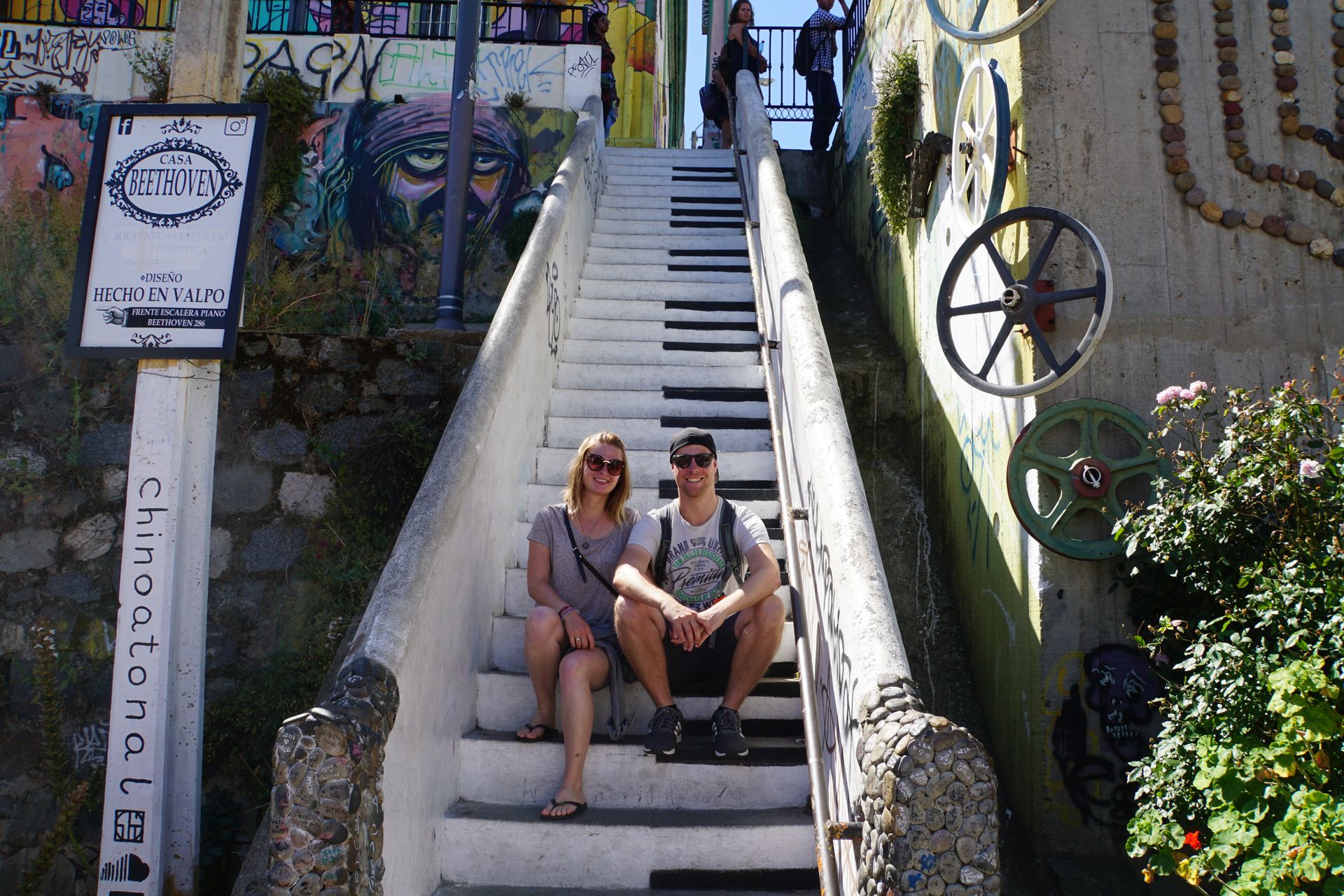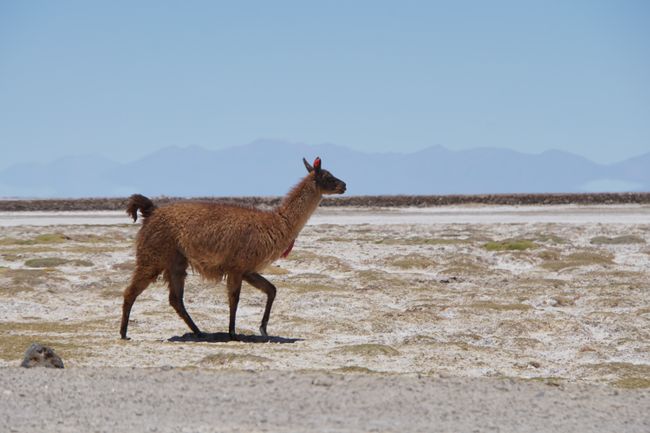Sounds in Fjordland
Ebifulumiziddwa: 29.03.2019
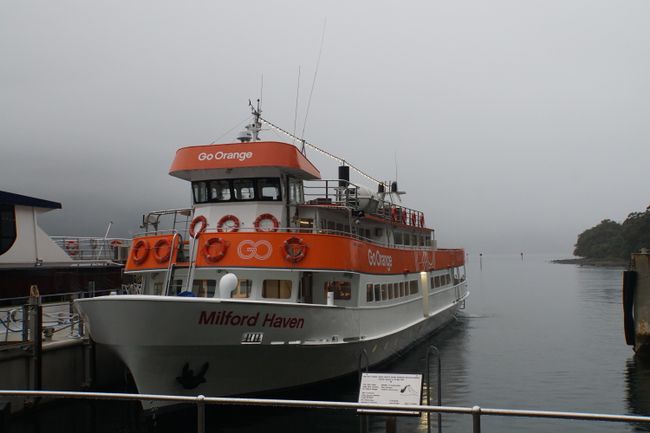
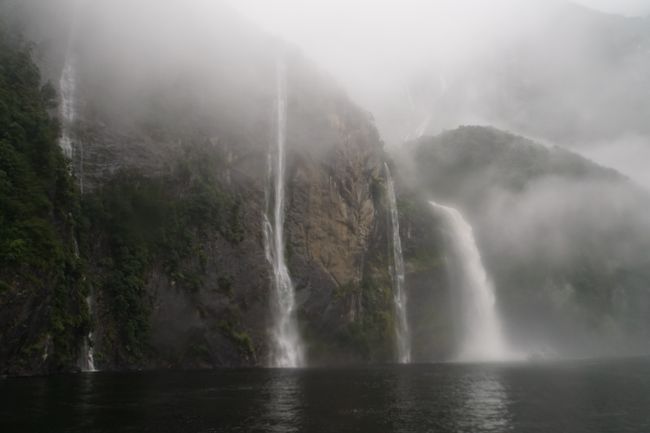
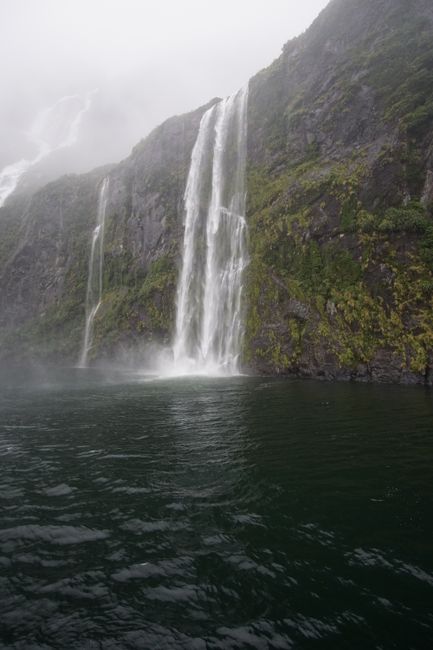
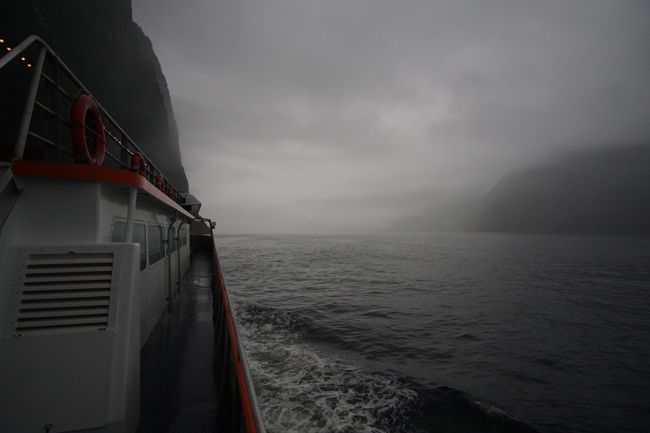
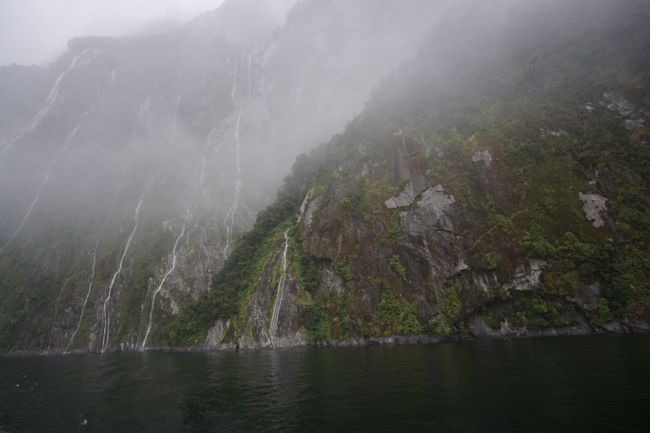
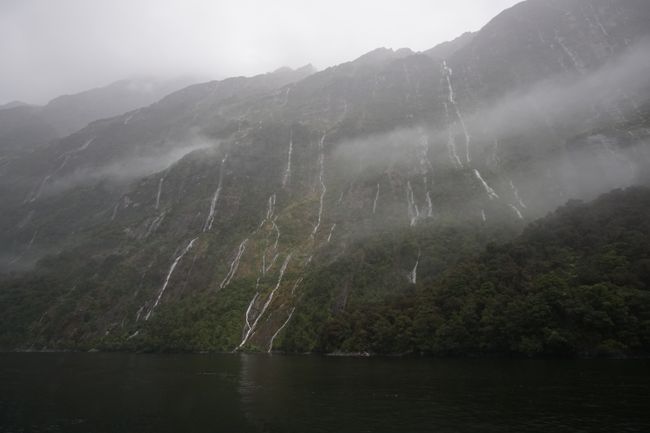
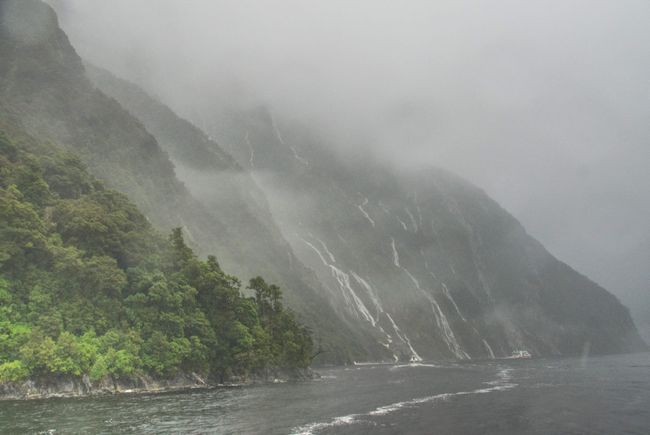
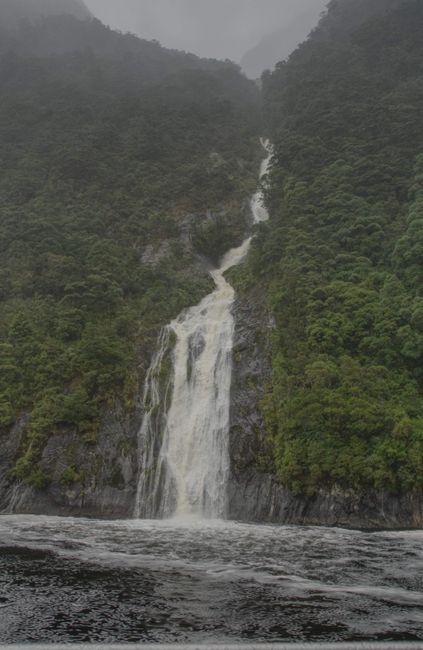
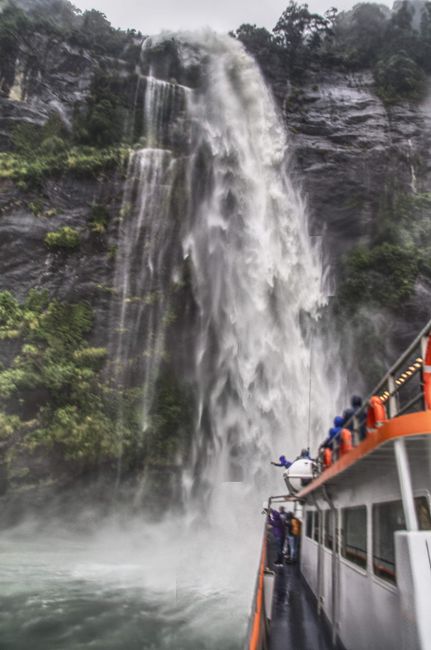
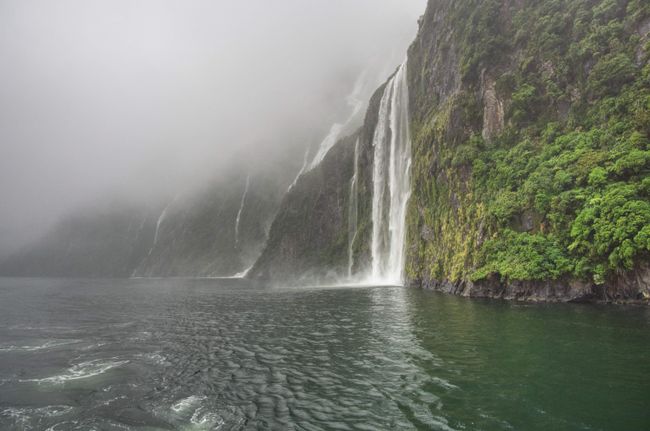
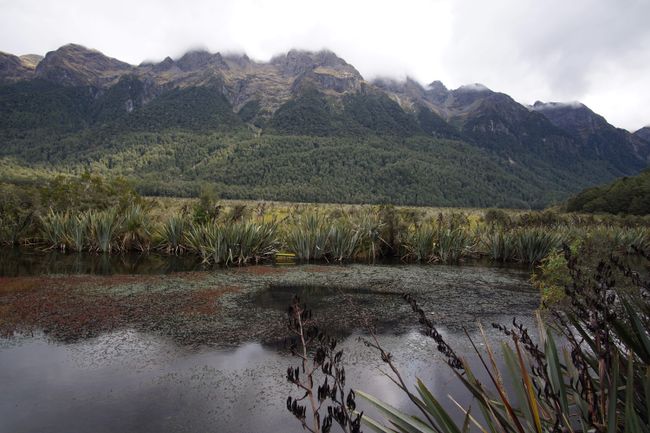
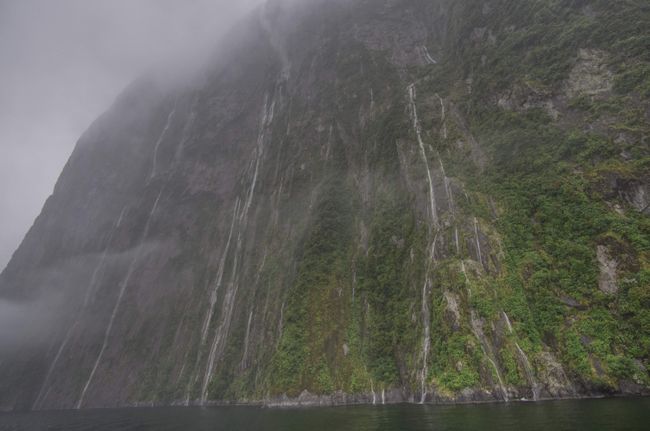
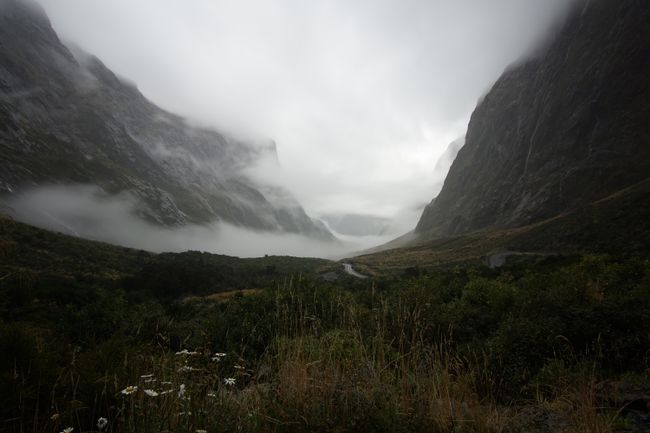
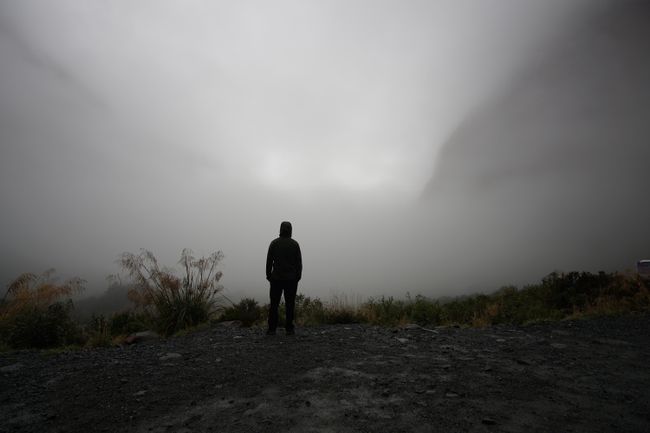
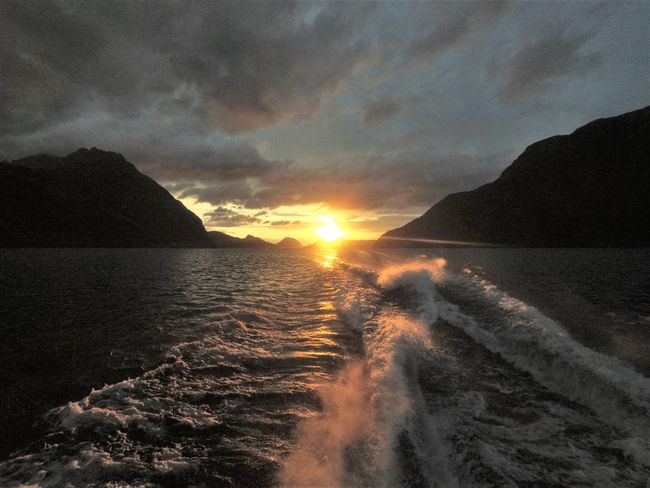
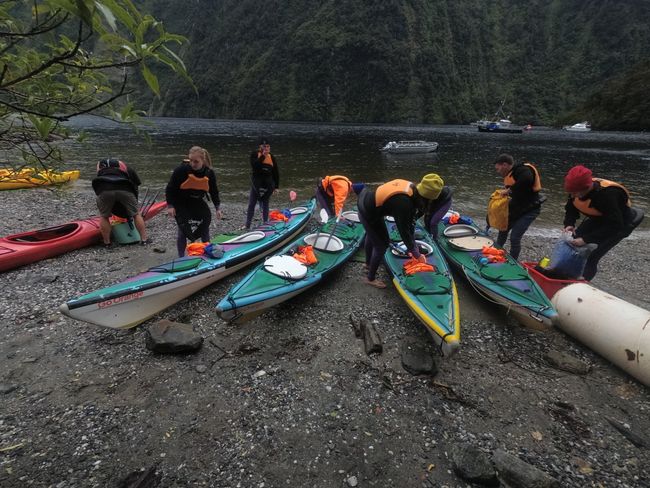
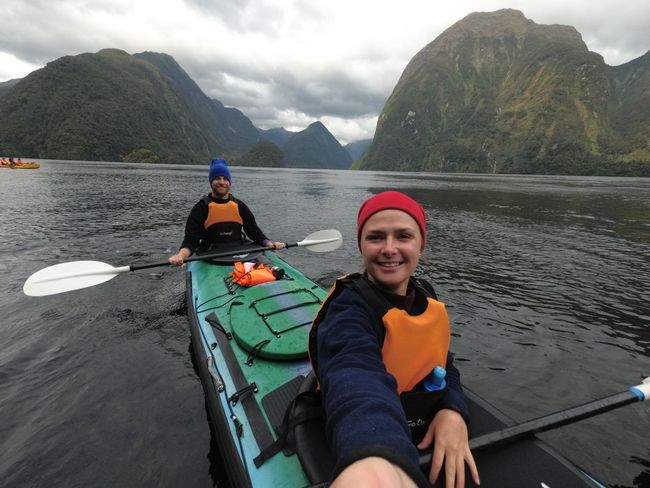
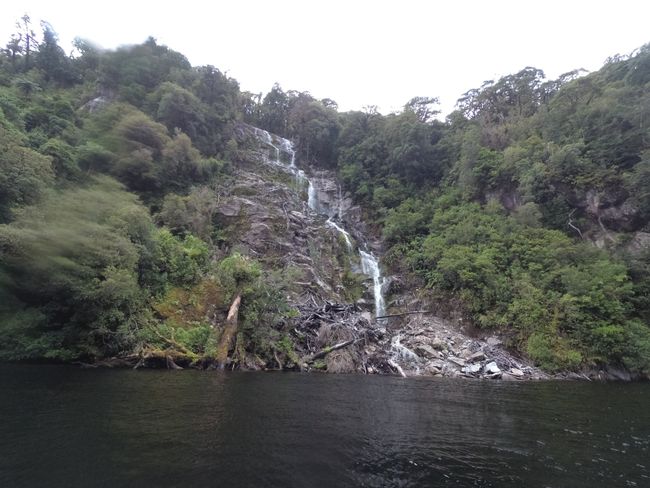
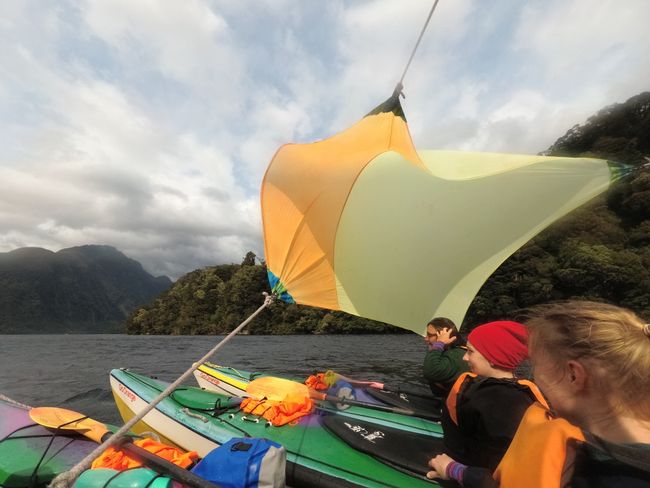
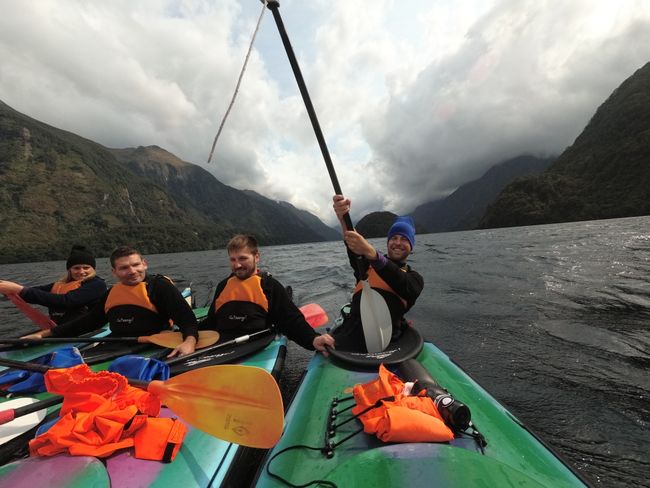
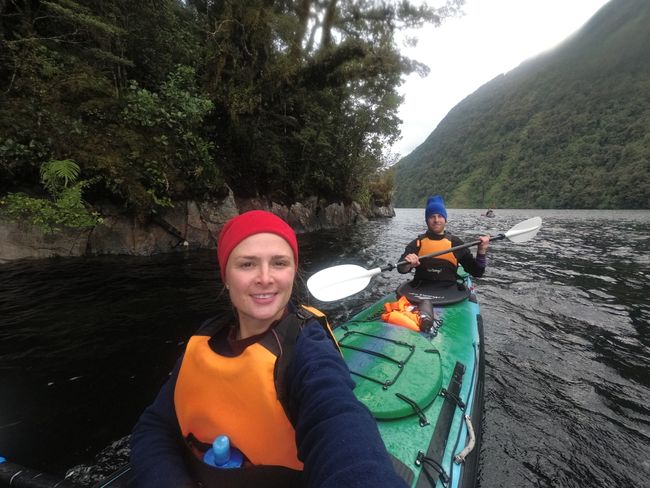
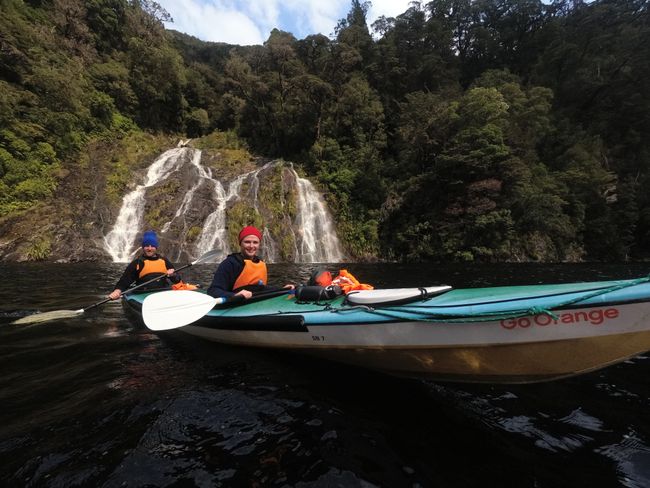
Wewandiise ku lupapula lw'amawulire
A note in advance: We apologize for the long break. We have been in Asia for a few days now and had visitors from Germany, so we are quite busy. We promise to do better! But now we finally continue with our adventures in New Zealand, where we have arrived in the southeastern part of the South Island.
What will the weather be like on a trip to one of the wettest regions in the world? Where rainfall is measured in meters rather than millimeters? Where it rains on over 200 days a year, where after 3 consecutive dry days, it is considered a drought, and the vegetation starts to wither after nearly 7 days without rain? One thing can be revealed in advance: our tent stayed dry and Markus' kayaking outfit as well...
But let's start at the beginning. After a short stop in Queenstown, where we treat ourselves to sushi and coffee, we arrive in Te Anau, a small town on the edge of the lake of the same name. Te Anau is located on the border of Fjordland, the largest national park in the country with over 12,500km². Therefore, the town is an ideal starting point for our planned trips to Milford Sound and Doubtful Sound, New Zealand's most famous and deepest fjords, respectively. It is not surprising that Te Anau seems to exist solely for tourism and one tour operator follows the next. Even before we set up our tent, we check these providers and quickly end up with Go Orange, one of the two only agencies authorized to operate in Doubtful Sound as well. We spontaneously book a cruise in Milford Sound the next morning - getting up early again - and a day kayak tour in Doubtful Sound for the following day. We would have liked to book a two-day tour in Doubtful Sound, but the prices are more than steep and we have a lot planned. In retrospect, however, we found that we made the better deal. Especially since Doubtful Sound was full of sandflies, little biting creatures whose bites itch as funnily as mosquito bites.
When we arrive at the campsite, we are provisionally warned not to pitch our tent near trees because a storm is expected. However, it is not as bad as expected, and after a few drops of rain and a dark sky in the distance, we enjoy a dry, albeit very short night. At 6:00 a.m., we set off towards Milford Sound. Although it is only about 120km to the departure point of our tour boat, it takes us about 2 hours due to the narrow and winding roads. And as soon as we cross the border to Fjordland, the gray sky opens its gates and it starts to rain incessantly. But that does not dampen our mood much because we have been told that to experience the sounds in their full beauty, you need a lot of water from above. And we have good, Patagonia-tested rain gear with us.
At 9:00 a.m., our ship sets sail. Covered and with a cozy seat on a small couch by the window, we sail through the fjord for over 2 hours to the open sea and back.

The weather is gray, in strong contrast to our cruise boat
Just a few minutes after we set sail, it becomes clear why a tour through the sounds does not fall into the water when it rains. Loud, imposing, and so numerous that we can hardly count them, waterfalls cascade down the slopes of the rocky fjord. It is incredibly beautiful! Every now and then, one of us ventures outside to quickly take one or two photos before the camera lens gets wet. Although the thick, low-hanging clouds obscure the view to the crests of the waterfalls that can be up to 162m high, we are not bothered by that much. Because only when it rains, so many waterfalls can be seen. The hard rock walls of the fjord are only covered by a maximum of 10-30cm of soil. Thick moss, ferns, and a few species of trees that grow very slowly and cling to the rocks with their strong roots grow on top of it. As a result, all the rainwater cannot be stored in the amounts in which it falls from the sky, and it accumulates into hundreds of waterfalls. There are also a few permanent waterfalls in Milford Sound that are fed by lakes on the top of the shoreline cliffs, but there are only about four of them. Absolutely crazy! At least we are glad about the 'bad' weather.

The Four Sisters Falls plunge from the clouds with a deafening noise

Even the largest of the four can only be seen when it rains

Waterfall after waterfall, only the largest ones have names
We dare to get very close to one of the permanent waterfalls. This 155m high Stirling Fall is particularly impressive when it rains, and our camera is exposed not only to the rain but also to the foaming spray of the waterfall.

Here, nothing stays dry!
During the trip, our captain occasionally feeds us with some information. For example, we learn that Milford Sound was the first fjord discovered by European explorers. The water body quickly became a tourist attraction, so it is not surprising that Milford Sound is also the most easily accessible fjord. After all, there is a road to the harbor where the tourist boats depart, and you can even fly over it by small plane.
Fun fact aside: Those of you who are interested in geology may have been bothered by the fact that many fjords in New Zealand are called sounds. Geologically speaking, both Milford Sound and Doubtful Sound are real fjords, i.e., U- or V-shaped valleys carved out by glaciers from the interior of the country and flooded by the rising sea level. However, the first Europeans to land here were not familiar with fjords from their homeland but mistakenly thought they were so-called sounds, i.e., river valleys flooded by land subsidence. The name simply stuck.
Both from a geological and a biological point of view, both Milford Sound and Doubtful Sound are very interesting. Due to the heavy rainfall - according to our guide, it can be up to 7 meters a year in Doubtful Sound, that's 7000mm!!! - a freshwater layer forms (according to Wikipedia) up to 10m thick, which remains on top of the saltwater of the Tasman Sea due to its lower density. The waterfalls carry suspended matter, plant debris, and minerals downstream, darkening the freshwater layer. This then blocks significantly more sunlight than saltwater. This is why the water in the fjords looks incredibly dark and deep, and it allows animals and plants to settle that would otherwise live in deeper areas. New Zealanders are particularly proud of the black corals that have settled here at a depth of almost 40m. Dolphins and even orcas are said to venture into the fjords, but we unfortunately do not see any. Our captain claims to have spotted a penguin once, but by the time the boat came to a halt, the animal had already disappeared.
After our tour, we drive straight back to Te Anau, where we discover that while it has been raining continuously in the national park, our tent remains dry. That's what you call luck.
The next morning, Klaus-Gunter gets to sleep in while we are picked up by a bus at half past six. Our very awake and talkative bus driver takes us to Manapouri in just over an hour, where we board a boat over the lake of the same name. Lake Manapouri is a glacier lake in the Fjordland National Park, and although we travel about 28km to reach the western end of the lake, it is the second smallest lake in the park.

On the west shore, we find an information center and a view of the largest cavern power station in the country. By the way, a cavern power station is a hydroelectric power station where the machines are located in a cave, a so-called cavern, blasted into the rocks. All water inlets and outlets run underground. In the info center, we learn that this power station was built in the 1960s and already at that time, there was strong opposition from the population against the destruction of the wild nature by the lake. Obviously it was in vain, but since clean energy is generated here to supply, among other things, the aluminum smelter (metal processing) in Bluff, people are now rather happy about this facility.
After a few minutes, we are driven by bus to Doubtful Sound. The buses here are refueled with fuel transported by boat across the lake, the roads are better gravel roads, and our bus driver has fun waiting at every intersection - given all the traffic here at the end of the world!
Finally, after a journey of about 4 hours, we reach the shore of Doubtful Sound. We put on our kayaking outfits and drag the boats to the shore. After a short briefing from our guide, we get on the water!

Our group consists of 8 tourists and a guide (let's call him David, we forgot his name). The latter is a pretty cool guy. He is a trained environmental scout who has introduced children to New Zealand's nature in schools and leisure activities and has given them a sense of the importance of protecting this unique landscape. He has only been a kayak guide for one season. Maybe he will do something else again next year. It's a relaxed lifestyle!
After we have crossed to the opposite shore, we are reasonably safe, able to steer reasonably well, and quickly form a raft with the other kayaks. To do this, we have to drive close to each other and keep the boats close together. The advantage of this formation is that it is more difficult for us to capsize, and David can comfortably tell us all kinds of things about the sound, flora, and fauna. We already know a lot from our cruise the day before. But we learn that Doubtful Sound is also called Sound of Silence because it is so calm and remote and with a depth of 421m, it is the deepest of the sea arms in the national park. The name Doubtful Sound, by the way, comes from the fact that the European explorers were not sure whether the fjord was a safe harbor. Additionally, David explains to us that without all the rain, plants and trees could not grow on the slopes. The moss that also grows there can store rainwater for a certain time and provide it to other plants. However, this water is used up after a maximum of 7 days. After that, the moss is too dry and - with continued absence of rain - massive landslides can occur.
And then we paddle, always staying close together, towards the sea. At the beginning, the water is still very calm, it is dry, and there is hardly any wind. However, since it rained the day before, many of the smaller waterfalls are still present. Perfect conditions!


It is only moderately strenuous, and we take enough breaks in between. Since only two agencies are allowed to operate in Doubtful Sound, there are accordingly few tourists here. There is only one other kayak group starting with us and a few tourists staying overnight. However, they soon turn into another arm than we are and so we are almost alone. It is quiet, except for the sound of some smaller waterfalls and the steady paddling. With the kayak, we can get as close to the rock walls as we want. Truly a great experience.

We come very close to the shores and admire how the tree roots cling to the rocks

After a few minutes, we take a curve and realize that we are getting closer to the Tasman Sea and have left the sheltered harbor. The waves increase, and paddling becomes noticeably more strenuous. But we can let the wind do the work on the way back. David has a sail with him. We form our kayak raft, and the two outer boats stretch the sail over us. The wind keeps changing, so we constantly have to adjust the sail. But it works, and we are blown back to our starting point. Brilliant!


Due to the absence of rain today, we have also stayed nice and dry! However, getting out turned out to be more complicated than expected, especially since someone wears flip-flops. And so at least Laura managed to drive back to Te Anau freshly washed. After all, we were provided with all the clothes for kayaking by the agency, so she could slip into her warm and dry clothes.
All in all, our trips to Fjordland National Park were absolutely worthwhile. The journey to Doubtful Sound alone was already a tour in itself, the waterfalls in Milford Sound stunning, and kayaking was fun. We also learned something new and are once again amazed by New Zealand's partially untouched and diverse nature.
Wewandiise ku lupapula lw'amawulire
Okuddamu

Lipoota z'entambula New Zealand mu ggwanga lya New Zealand
